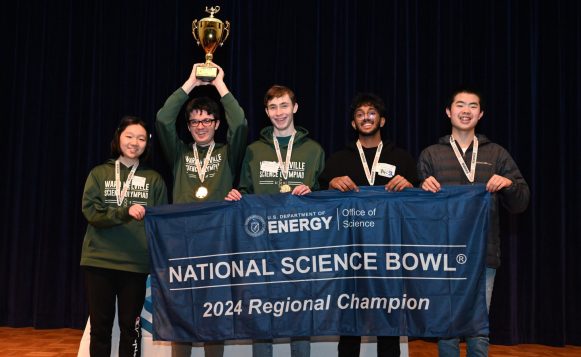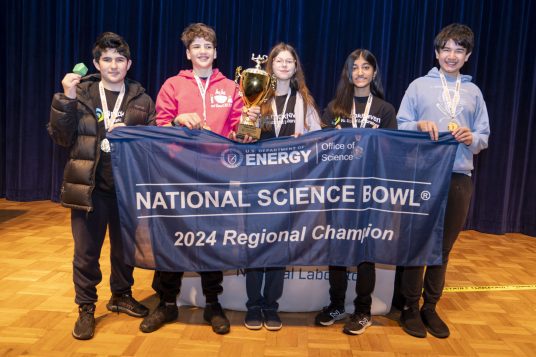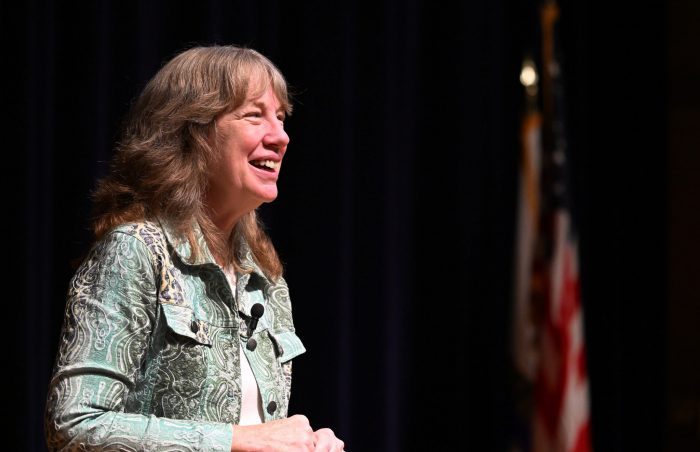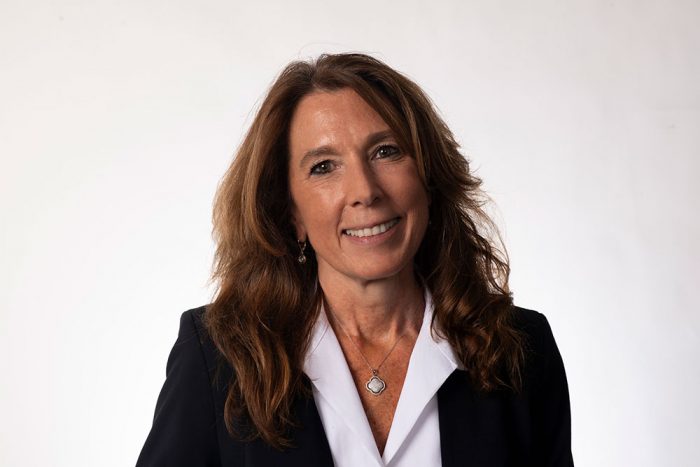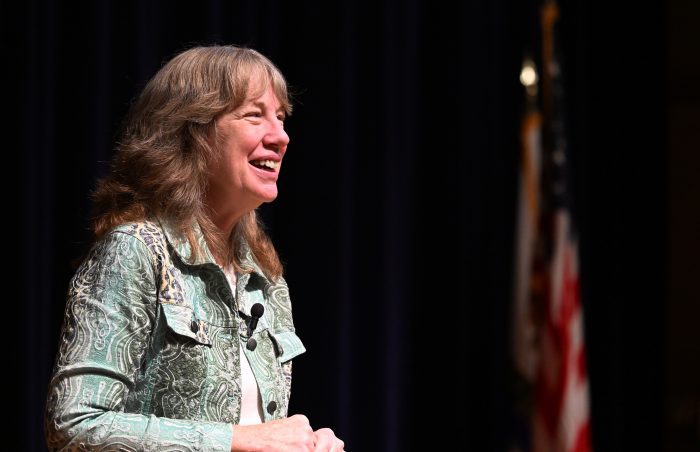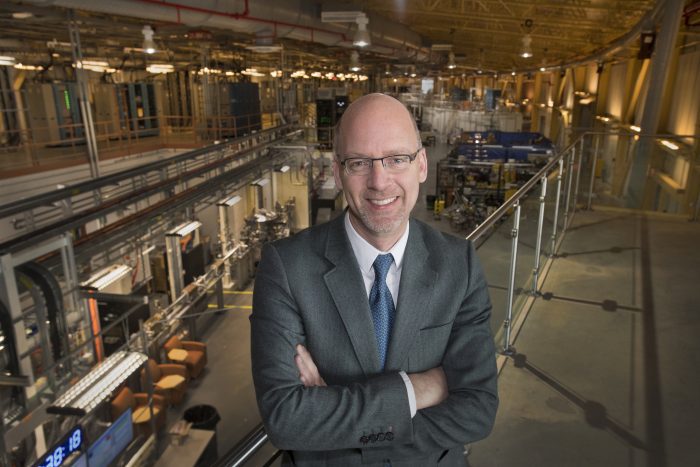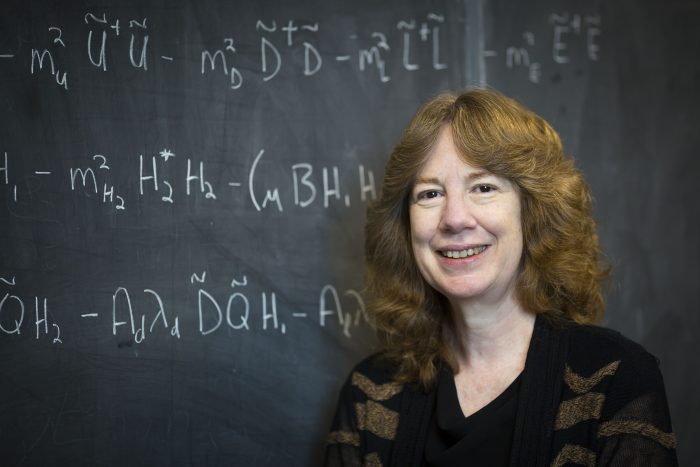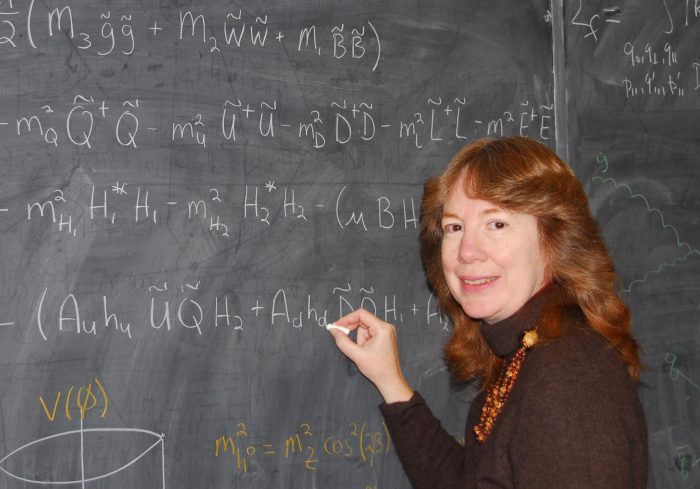First-place teams advance to the National Science Bowl finals in April
Students from Hunter College Middle School and Ward Melville High School are headed to the U.S. Department of Energy’s (DOE) National Science Bowl this spring after earning the top spots in the Long Island Regional Middle School and High School Science Bowl competitions hosted by DOE’s Brookhaven National Laboratory on Feb. 1 and 2.
These are repeat wins for both schools, who were named regional champions in the fast-paced question-and-answer academic tournament last year. The Science Bowl tests students’ split-second knowledge on a range of science disciplines including chemistry, biology, physics, mathematics, astronomy, and general, earth, and computer science.
“We love hosting the Science Bowl competitions and welcoming the top STEM students from our region,” said Amanda Horn, a Brookhaven Lab educator who coordinated the events. “We are always impressed by the level of competition for both competitions. It was especially exciting to welcome many additional students and new teams this year for our biggest Science Bowl ever. We couldn’t do it without our amazing volunteers!”
The first-place teams win an all-expense paid trip to the National Science Bowl where they will face teams from around the country, plus a trophy and banner to display at their schools. All prizes and giveaways are courtesy of the event’s sponsors, Brookhaven Science Associates and Teachers Federal Credit Union.
The National Science Bowl finals are scheduled to take place April 25-29 near Washington, D.C.
“I really do love this event and each and every year I’m just overwhelmed and amazed at how much you guys know,” Brookhaven Lab Director JoAnne Hewett, who addressed high schoolers before their competition kicked off on Feb. 2.
While this marked Hewett’s first Science Bowl at Brookhaven since joining the Lab last summer, she noted that she previously participated in DOE’s SLAC National Accelerator Laboratory’s regional competition each year since it began in 2010 and proudly donned last year’s t-shirt to prove it.
“It’s just wonderful the education that you’re getting, and more importantly, the interest in learning, because that’s the thing that will carry you though life, is if you never give up that interest in learning and being brave and going out and answering questions that you may or may not know the answer to,” Hewett said. Horn presented Hewett with Brookhaven’s 2024 Science Bowl t-shirt to welcome her to the Lab’s Science Bowl team.
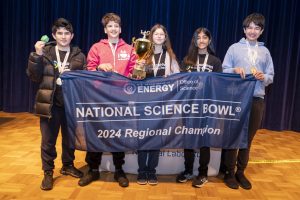
Middle School Top Four
The Middle School competition hosted teams from Long Island and New York City, with 100 students representing 20 teams and 16 middle schools.
Hunter College Middle School earned the regional champion title for the third year in a year, with zero losses throughout the competition day.
“Last year, going to nationals really motivated me to keep going and study for regionals,” Hunter College co-captain Andres Fischer said, “I’m really glad that we got to make here and do well. I’m proud of the rest of us who weren’t here last year—I think we make a really good team.”
Lots of preparation, plus a supportive team, helped secure the win, according to co-captain Camille Pimentel.
“We studied a lot, so we read lots of books and stuff—it was a lot of work,” Pimentel said. “We also meet weekly to practice.”
The team will again study hard for nationals, where they will have another chance to compete and enjoy its famous free soft-serve ice cream machine.
1st Place: Hunter College Middle School — Andres Fischer, Camille Pimentel, Hudson Reich, Aria Kana. Benjamin Muchnik
2nd Place: Great Neck South Middle School — Aaron Son, Eric Zhuang, Andy Zhuang, Jayden Jiang, Michael Sun
3rd Place: Paul J. Gelinas Junior High School — Valentina Trajkovic, Aydin Erdonmez, Tony Xu, Terrence Wang, Victoria Chen
4th Place: NYC Lab Middle School for Collaborative Studies – Ameena Elshaar, Ryan Casey, Qi Lin Wu, Nikki Perlman, Ayden Jiang
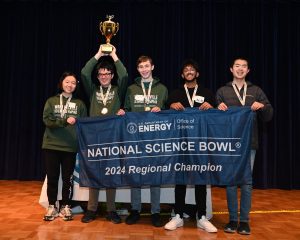
High School Top Four
This year’s high school Science Bowl shaped up to be the largest ever hosted by Brookhaven Lab with 30 teams and 150 students.
“We were fortunate to kind of have the stars aligned with our team composition,” Ward Melville captain Michael Melikyan said. The team had members who specialized in two science subjects at once,
“I’d like to thank our coach, he’s been absolutely amazing, and this has been a phenomenal thing,” Melikyan added. “We’re grateful to Brookhaven Lab for hosting this.”
1st Place: Ward Melville High School — Rithik Sogal, Harry Gao, Anna Xing, Michael Melikyan, Sean Skinner
2nd Place: Great Neck South High School — Brandon Kim, Erin Wong, Laura Zhang, Luke Huang, Allen Vee
3rd Place: Half Hollow Hills High School East — Aidan Joseph, Stasya Selizhuk, Rishi Aravind, Jack Goldfried, Alexandra Lerner
4th Place: William Floyd High School — Alice Chen, Anjel Suarez, Jason Alexopoulos, Joshua Schultzer, Zariel Macchia
STEM Challenge, Expo, and Tour
The science fun didn’t stop throughout the competition days—with a STEM Expo tour, and science challenge organized by the Lab’s Office of Educational Programs.
Staff and students from across Brookhaven Lab’s departments offered hands-on science demonstrations that included a look at how particles are kept in a circular path in accelerators, a cloud chamber that revealed charged particle tracks, an overview of medical isotopes, machine learning techniques, and more.
Teams that did not advance to the double elimination rounds enjoyed a tour of the National Synchrotron Light Source II—a DOE Office of Science user facility that creates light beams 10 billion times bright than the sun, directing them towards specialized beamlines that reveal material structures and chemical changes.
Students also joined a timed STEM Challenge in which they solved tricky science and math puzzles to break several locks on boxes filled with treats.
Middle School STEM Challenge winners: 1st place: Stimson Middle School Team 1, 2nd place: Sayville Middle School, 3rd place: R.C. Murphy Junior High School Team 1
High School STEM Challenge winners: 1st place: Jericho Senior High School, 2nd place: Plainedge Senior High School, 3rd place: Bellport High School
An Introduction to a National Lab
The regional Science Bowl is one of many ways Brookhaven Lab introduces students to its science goals, researchers, facilities, and learning opportunities each year—in hopes that they will return to the national lab system one day as the next generation of scientists.
“We really need an energetic new generation workforce to come to Brookhaven and bring us all the talent that you have and all your inquisitiveness—that’s what we need in science, inquisitiveness,” Hewett said.
At the start of both competition days Gary Olson, deputy site manager at the Brookhaven Site Office, shared an overview of Brookhaven’s world-class science tools, discoveries, and research.
“This could be the start of a STEM journey for you,” Olson said, adding that there are also training opportunities available for teachers.
On Feb. 1, middle schoolers heard from Brookhaven Lab physicist Mary Bishai about her own STEM journey. Bishai is a co-spokesperson for the Deep Underground Neutrino Experiment (DUNE)—an experimented based at DOE’s Fermi National Accelerator Laboratory that will send intense beams of neutrinos through 800 miles of Earth’s crust to capture signals that may reveal neutrino characteristics. Bishai shared her career path in particle physics and the Lab’s work, past and present, to better understand neutrinos—ghostlike particles that travel at nearly the speed of light.
Students also met Lab science and support staff from across departments, retirees, and former Science Bowl competitors who served as volunteers—many of whom return year after year. Approximately 90 volunteers joined the two competition days in roles as judges, scorekeepers, and support.
Brookhaven National Laboratory is supported by the Office of Science of the U.S. Department of Energy. The Office of Science is the single largest supporter of basic research in the physical sciences in the United States and is working to address some of the most pressing challenges of our time. For more information, visit science.energy.gov.

